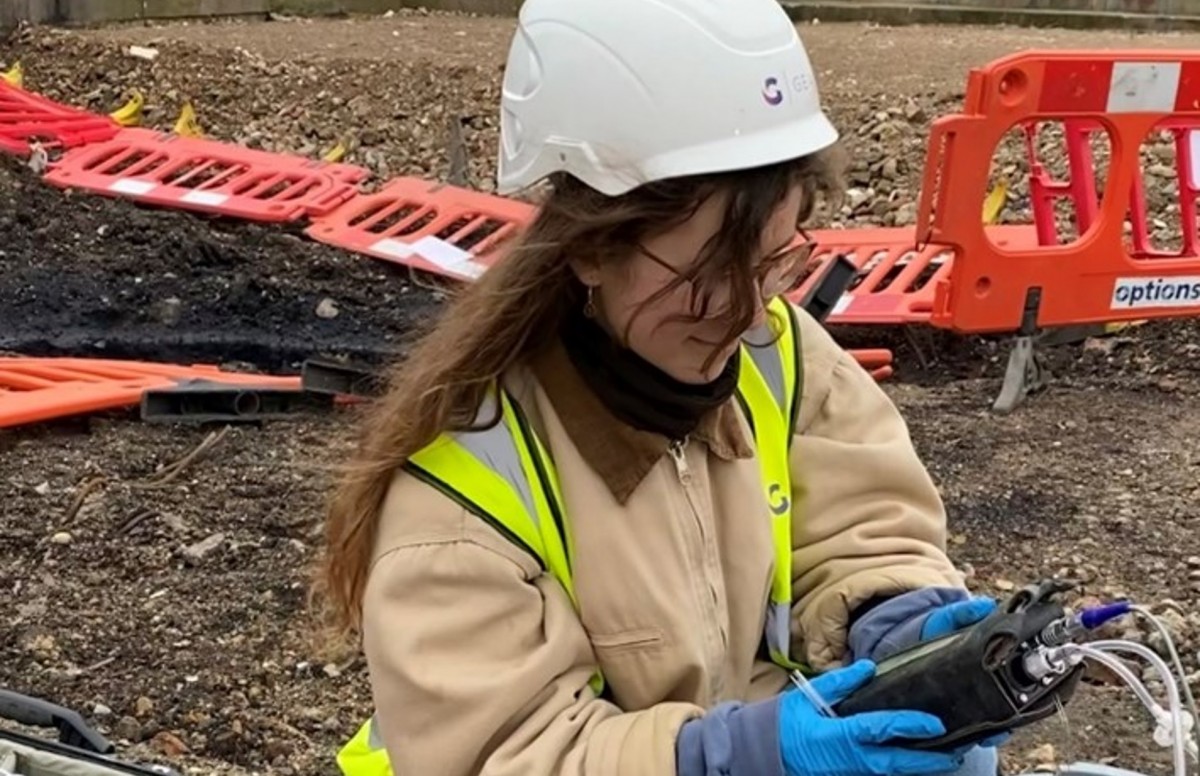Some Known Questions About Geotheta.
Some Known Questions About Geotheta.
Blog Article
All about Geotheta
Table of ContentsNot known Incorrect Statements About Geotheta Not known Details About Geotheta The smart Trick of Geotheta That Nobody is Talking AboutThe Buzz on GeothetaThe Facts About Geotheta Revealed

They carry out website examinations, gather examples, carry out laboratory examinations, and analyze data to review the suitability of the ground for building projects - Geo Tech Engineer. Based on their searchings for, geotechnical engineers provide suggestions for foundation style, incline security, retaining frameworks, and reduction of geotechnical hazards. They collaborate with various other experts, such as designers, architectural designers, and construction groups, to make sure that geotechnical considerations are integrated into the overall project layout and application
By examining the habits and properties of dirt and rock, they can recognize possible geotechnical dangers such as landslides, soil negotiation, or incline instability. Their know-how assists prevent failings or accidents that might endanger lives and building. Right here are some thorough duties and responsibilities of a geotechnical engineer: Site Examination: Geotechnical designers conduct site investigations to gather information on subsurface conditions.
They interpret the data to recognize the buildings and actions of the dirt and rock, including their toughness, permeability, compaction qualities, and groundwater conditions. Geotechnical Evaluation and Style: Geotechnical engineers evaluate the information accumulated throughout website investigations to assess the security and viability of the site for building and construction tasks. They perform geotechnical calculations and modeling to assess elements such as bearing capacity, settlement, incline stability, lateral earth pressures, and groundwater flow.
Top Guidelines Of Geotheta
Foundation Style: Geotechnical engineers play an essential function in making foundations that can safely sustain the desired framework. They analyze the soil conditions and tons needs to establish the suitable structure type, such as superficial structures (e.g., footings), deep foundations (e.g (https://my-store-fc66c1.creator-spring.com/)., stacks), or specialized strategies like soil renovation. They think about variables such as settlement restrictions, birthing capability, and soil-structure communication to develop optimal foundation styles
They review construction strategies, display website tasks, and conduct field assessments to confirm that the layout referrals are followed. If unanticipated geotechnical concerns emerge, they assess the situation and give recommendations for removal or adjustments to the design. Danger Analysis and Mitigation: Geotechnical engineers analyze geotechnical threats and threats connected with the task site, such as landslides, liquefaction, or dirt erosion.

Collaboration and Communication: Geotechnical engineers work very closely with other professionals associated with a project, such as architects, structural designers, and building groups. Reliable communication and collaboration are vital to integrate geotechnical considerations into the overall project click here now design and building and construction procedure. Geotechnical engineers supply technical proficiency, response inquiries, and ensure that geotechnical demands are fulfilled.
The Single Strategy To Use For Geotheta
Below are some kinds of geotechnical designers: Foundation Designer: Structure engineers concentrate on designing and assessing structures for structures. They evaluate the soil conditions, lots needs, and site features to figure out one of the most appropriate foundation type and layout, such as superficial structures, deep structures, or specialized techniques like heap foundations.
They review the variables influencing slope security, such as dirt residential properties, groundwater conditions, and slope geometry, and create techniques to avoid slope failings and minimize dangers. Quake Designer: Earthquake engineers focus on examining and creating structures to withstand seismic forces. They evaluate the seismic hazard of a website, assess soil liquefaction capacity, and establish seismic layout criteria to guarantee the safety and security and durability of structures during earthquakes.
They execute area screening, gather examples, and evaluate the accumulated data to identify the soil residential properties, geologic developments, and groundwater conditions at a site. Geotechnical Instrumentation Engineer: Geotechnical instrumentation designers focus on monitoring and gauging the habits of soil, rock, and structures. They install and keep instrumentation systems that monitor variables such as soil negotiation, groundwater degrees, slope movements, and structural displacements to analyze performance and offer early cautions of possible issues.
Geotheta Fundamentals Explained
They conduct examinations such as triaxial examinations, debt consolidation examinations, straight shear tests, and permeability examinations to collect information for geotechnical analysis and design. Geosynthetics Engineer: Geosynthetics engineers concentrate on the style and application of geosynthetic products, such as geotextiles, geogrids, and geomembranes. They make use of these materials to boost dirt security, reinforce slopes, give water drainage remedies, and control disintegration.
They have a tendency to be investigative people, which suggests they're intellectual, reflective, and investigative. They are interested, systematic, rational, logical, and logical. Some of them are additionally social, implying they're kind, charitable, cooperative, person, caring, useful, empathetic, tactful, and friendly - Geo Tech Engineering.
In the workplace environment, geotechnical designers utilize specialized software program tools to do computations, create layouts, and assess information. They prepare reports, review job specifications, communicate with clients and employee, and coordinate job tasks. The office setup gives a conducive setting for research study, analysis, and collaboration with various other professionals associated with the task.
Indicators on Geotheta You Should Know
They regularly visit task websites to carry out site investigations, assess geotechnical problems, and gather data for evaluation. These visits include traveling to various locations, in some cases in remote or tough surfaces. Geotechnical designers might do dirt tasting, conduct examinations, and screen building and construction tasks to ensure that the geotechnical facets of the task are being implemented appropriately.
Geotechnical engineers additionally work in specialized geotechnical labs. In these centers, they carry out experiments, carry out tests on dirt and rock samples, and evaluate the design buildings of the materials. Geotechnical lab engineers function thoroughly in these environments, managing testing devices, running instruments, and taping data. They collaborate with various other laboratory team to make sure precise and trusted testing results.
Report this page